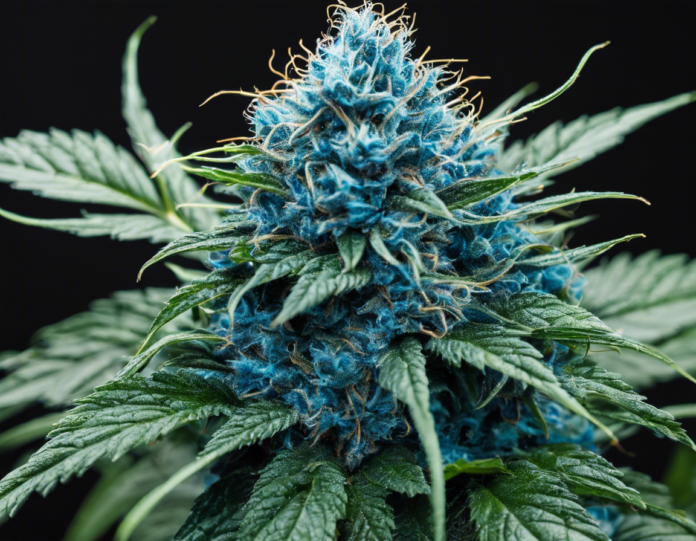In the fascinating world of aquatic life, one species that stands out due to its striking appearance and intriguing characteristics is the Electric Blue Strain. This mesmerizing fish, known for its vibrant blue coloration, is a popular choice among aquarium enthusiasts. However, there is much more to these captivating creatures than just their appearance. In this comprehensive guide, we will delve into the distinct features and behavior of the Electric Blue Strain, providing valuable insights for both seasoned hobbyists and newcomers to the hobby.
Understanding the Electric Blue Strain
Origins and History
The Electric Blue Strain, also known as the Electric Blue African Cichlid, hails from the rocky shores of Lake Malawi in Africa. This species is a result of selective breeding, aimed at enhancing its distinctive blue coloration. The breeding process has led to the development of a unique color morph that sets the Electric Blue Strain apart from other cichlids.
Physical Characteristics
One of the most striking features of the Electric Blue Strain is its intense blue color, which shimmers and reflects light in a truly mesmerizing manner. These fish typically have elongated bodies with dorsal fins and tail fins that add to their elegant appearance. The males of the species are known for their brighter and more vivid blue hues, while females tend to have a slightly duller coloration.
Behavior and Temperament
Despite their small size, Electric Blue Cichlids are known for their aggressive behavior. They are territorial by nature and can exhibit dominant tendencies, especially when establishing their place within a community tank. It is essential to provide ample hiding spots and territories within the aquarium to minimize aggression and promote harmonious cohabitation.
Care and Maintenance
Tank Requirements
To ensure the health and well-being of Electric Blue Cichlids, it is crucial to provide them with a spacious aquarium that mimics their natural habitat. A tank size of at least 50 gallons is recommended to accommodate their territorial behavior. Additionally, incorporating rocks, caves, and live plants can help create suitable hiding spots and territories within the tank.
Water Parameters
Maintaining optimal water conditions is paramount for the health of Electric Blue Cichlids. These fish thrive in alkaline water with a pH level ranging from 7.8 to 8.6. It is essential to monitor water quality regularly and perform routine water changes to keep ammonia and nitrite levels in check.
Diet and Feeding
Electric Blue Cichlids are omnivorous and require a balanced diet to meet their nutritional needs. A combination of high-quality flakes, pellets, and frozen foods such as bloodworms and brine shrimp can help keep these fish healthy and vibrant. Feeding should be done in moderation to prevent overeating and maintain proper digestion.
Breeding
Breeding Electric Blue Cichlids can be a rewarding experience for aquarists. These fish are known to exhibit maternal mouthbrooding, where the female carries fertilized eggs in her mouth until they hatch. To promote breeding behavior, separate breeding tanks with ample hiding spots can be set up to provide a conducive environment for spawning.
Common Challenges and Health Issues
Aggression
As mentioned earlier, Electric Blue Cichlids are known for their aggressive behavior, especially towards weaker or smaller tank mates. It is crucial to monitor their interactions closely and be prepared to separate aggressive individuals if necessary to maintain a peaceful community tank.
Malawi Bloat
Malawi Bloat is a prevalent health issue that affects many cichlid species, including the Electric Blue Strain. This condition is characterized by bloating, loss of appetite, and lethargy. Maintaining pristine water quality, providing a balanced diet, and regular health checks can help prevent and mitigate the risk of Malawi Bloat.
Frequently Asked Questions (FAQs)
1. Are Electric Blue Cichlids suitable for beginners?
– While these fish are visually stunning, their aggressive behavior can pose a challenge for inexperienced aquarists. It is recommended to have some prior experience in maintaining community tanks before introducing Electric Blue Cichlids.
2. Can Electric Blue Cichlids coexist with other fish species?
– Electric Blue Cichlids are territorial and can be aggressive towards smaller or more passive fish. When selecting tank mates, it is essential to choose larger, similarly sized cichlid species with compatible temperaments.
3. How often should Electric Blue Cichlids be fed?
– These fish should be fed 1-2 times a day, with the feeding amount adjusted to prevent overeating and maintain optimal health. A varied diet comprising of flakes, pellets, and frozen foods is ideal.
4. What is the lifespan of Electric Blue Cichlids?
– With proper care and maintenance, Electric Blue Cichlids can live up to 8-10 years in captivity. Ensuring a suitable habitat, balanced diet, and regular health checks can contribute to their longevity.
5. Can Electric Blue Cichlids change color?
– The color of Electric Blue Cichlids can vary based on factors such as mood, health, and lighting conditions. While their blue coloration is a defining trait, subtle changes in hue and intensity can occur.
In conclusion, the Electric Blue Strain exemplifies the beauty and complexity of the aquatic world, offering aquarists a unique glimpse into the mesmerizing realm of cichlid fish. By understanding their distinct characteristics, behavior patterns, and care requirements, enthusiasts can create a thriving environment for these captivating creatures, ensuring their health and vibrancy for years to come.












